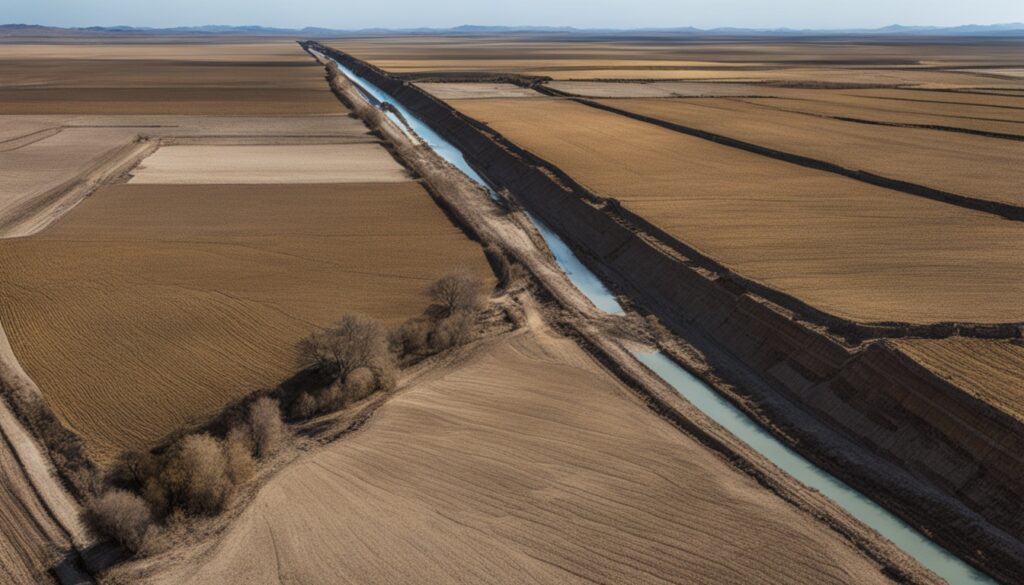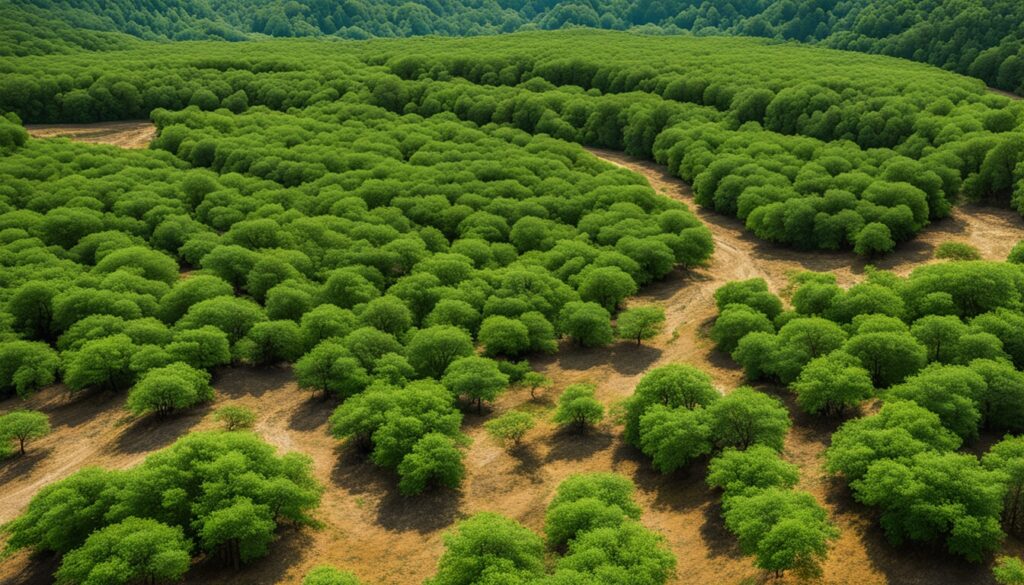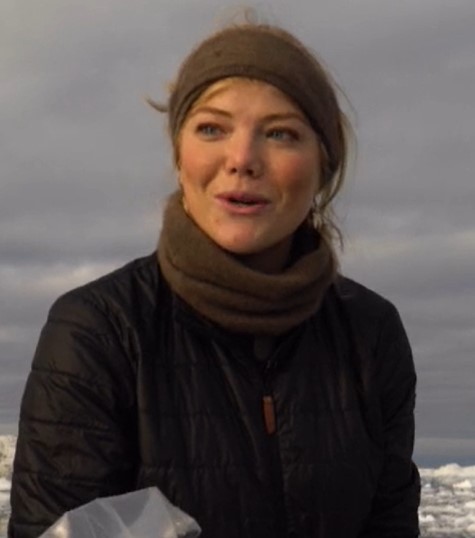The summer of 2024 is showing us how intense and common climate extremes are hitting Europe with extreme heat, huge wildfires, floods, and long droughts. These events are linked to a fast-changing climate123. As we face more extreme weather, it’s key to grasp the scale of these issues for European communities.
Key Takeaways
- Europe is warming faster than any other continent, heating up twice as fast since the 1980s23.
- Events like heatwaves, floods, droughts, and wildfires are getting worse and happening more often. They threaten public health, buildings, and the economy13.
- Climate disasters in Europe could cause over 1 trillion euros in losses each year by 21002.
- Climate change is bringing back diseases like malaria in some European areas1.
- Even though we’re learning more about and preparing for climate risks, we need quick action. We must cut emissions to meet the Paris Agreement goals2.
Overview of Summer 2023 Climate Extremes
The summer of 2023 in Europe was full of contrasts. Temperatures and rainfall varied a lot across the continent4. June was hot and dry in the north, but the south was cooler4. Then, July and August brought cold and rain to the north, while the south faced extreme heat and fires4.
Contrasting Temperature and Precipitation Patterns
Europe was warmer than usual overall, but it wasn’t the hottest summer4. There were big floods and flash floods in some places4. These events showed how unpredictable and extreme Europe’s climate is becoming.
Record-Breaking Sea Surface Temperatures
The seas around Europe were also very warm4. Heatwaves were seen in the North Atlantic, Baltic Sea, Bay of Biscay, and the Mediterranean. Sea temperatures hit record highs4. These heatwaves can harm coastal ecosystems and communities that depend on them.
“The summer of 2023 was a stark reminder of the growing threat of climate change and the need for urgent action to mitigate its impacts.” – Climate Scientist, Dr. Emma Watkins
Climate change is making extreme weather events like those in Europe’s summer of 2023 more common5. It’s important for communities and economies to adapt and become resilient6.
Heatwaves: A Deadly and Increasingly Frequent Threat
Heatwaves are now a major threat in Europe, causing thousands of deaths each year7. In 2003, over 70,000 people died from heatwaves in Europe7. The 2022 summer saw around 61,672 heat-related deaths across the continent7. Countries like Italy, Greece, Spain, and Portugal were hit the hardest7.
Impacts on Human Health and Mortality
Heatwaves are a big risk to health, especially for the elderly, babies, and people with health issues8. In 2022, Italy had the most heat-related deaths with 18,010, followed by Spain with 11,324, and Germany with 8,1737. Women were 56% more likely to die from heat than men, and the risk went up with age, especially for those over 807.
Regional Variations and Future Projections
Heatwaves vary in intensity and length across Europe7. In June 2022, temperatures were +0.78 to +2.33°C above normal, and in July, they were +0.18 to +3.56°C above normal7. The worst heatwave, linked to 11,637 deaths, happened in week 297.
The future looks grim for heatwaves8. By 2050, heat-related deaths could hit 120,000 a year in the WHO European Region8, unless we act8. We need strong climate action and effective heat-health plans to fight this threat8.
“Adverse health effects of hot weather, including heatwaves, are preventable through good public health practices.”8
With climate change, heatwaves will get worse8. We must have strong adaptation plans, early warnings, and help for vulnerable groups8. By acting now, we can save lives and make communities more resilient against heatwaves8.
Floods and Heavy Precipitation Events
Climate change is making Europe face more floods and heavy rain. These events are getting worse and causing a lot of damage9. For example, Austria had over 400 landslides and lost more than €110 million from heavy rain in August9. France saw damages of about €550 million from storms and rain in November9.
These weather events are hitting hard, causing big losses. Germany lost €140 million from summer rains and another storm in October9. Italy faced nearly €9 billion in damages from floods in May, but only 6% of that was insured9. Spain had bridges collapse and insurance claims went up by 232% in September9. The UK also suffered, with a storm in October causing about €509 million in losses across Europe, mostly from floods in the UK9.
Climate change is making these floods and heavy rains worse10. Studies show that heavy rain events like the recent floods can happen every 400 years in some areas10. But climate change is making these events more intense, with a 3-19% increase in the maximum rainfall in some regions10. The chances of such events happening are also rising, by 1.2 to 9 times10.
The July 2021 floods in Europe killed over 200 people10. This shows how dangerous these weather events can be for people, buildings, and communities. With climate change, we need to act fast to protect ourselves.
Rising Damages and Exposure
Floods and heavy rain are causing more damage and putting more people at risk9. From 1980 to 2021, the cost of flooding was nearly €258 billion, and it keeps going up by over 2% a year9. Building in floodplains makes it harder for vulnerable people and important places like schools and hospitals9.
These disasters cost a lot of money, like €24 million for Spanish insurers and €100 million to €115 million for the Insurance Compensation Consortium9. In Luxembourg, the harvest was 15% smaller than in 2022, costing €150 million9. The UK is also dealing with more subsidence claims because of land drying out and weakening buildings9.
We need better ways to manage risks and new insurance solutions because of climate change9. Insurers and policymakers must work together to create better risk models and new products. They should invest in sustainable projects too9. By teaching people about these risks, Europe can get ready for the challenges ahead91011.
Droughts: A Growing Challenge for Agriculture
Europe has seen a big problem lately – droughts are hitting the agricultural sector hard. Since 2018, over half of Europe has faced extreme drought, in both winter and summer12. These dry spells have cut down the yields of important crops like maize, corn, soybeans, and olive oil12.
Looking ahead, the outlook is worrying. Southern and central Europe might get drier and hotter in the 21st century, which could be a disaster for farming12. If warming gets worse, crops in southern areas could drop a lot. This might make it hard to grow crops like maize in Spain, France, Italy, and the Balkans without using irrigation12.
| Climate Scenario | Projected Economic Losses from Droughts (per year) |
|---|---|
| 1.5°C of global warming | EUR 25 billion |
| 2°C of warming | EUR 31 billion |
| 3°C of warming | EUR 45 billion |
The economic damage from these droughts is huge. Losses could jump from EUR 9 billion a year now to EUR 25 billion at 1.5°C warming, EUR 31 billion at 2°C, and EUR 45 billion at 3°C warming12.
Droughts also hit European agriculture hard. Areas hit by drought could jump from 13% to 26% in a warmer future12. Farmers face big changes, with southern wheat production possibly dropping by up to 50%. Wheat yields in Southern Europe might fall by 12%, but could rise by 5% in the north12.
The threat from droughts in Europe is clear – they’re a big risk for agriculture with big economic effects. Adapting and building resilience against extreme weather is key for European farming’s future13.

Wildfires: Exacerbated by Climate Change
Europe has seen a sharp rise in wildfires, mainly due to climate change14. Most fires start from human actions, but their severity is worsened by dry and hot weather and strong winds14. These fires used to mainly affect Southern Europe, but now they’re spreading to central and northern areas too14.
Wildfires have caused huge damage. Since 1980, over 700 people have lost their lives in Europe due to these fires14. The 2022 season was the second worst on record, with over 5,000 square kilometers burnt and a record number of protected nature sites affected1415.
Climate change is a major reason for the increase in wildfires in Europe1416. If global temperatures rise by 2°C, Southern Europe could see a tenfold increase in catastrophic fires14. Northern and central Europe will also face more wildfires during droughts1416.
The situation is alarming. In 2021, wildfires in Southern Europe burned over 391,736 hectares, the highest since 201714. Three of the worst fire years have been in the last six years14. These fires are happening outside the usual fire season and are getting worse14.
Wildfires are not just a problem in the Mediterranean. If temperatures rise by 2°C in the short-term and 3°C in the long-term, Europe will face more wildfires14. In extreme scenarios, temperatures could go up by 4°C, making wildfires even more likely14. This will make the risk of wildfires much higher across Europe1416.
The threat of wildfires is not just in the Mediterranean. If temperatures rise by 2°C in the short-term and 3°C in the long-term, Europe will face more wildfires14. In extreme scenarios, temperatures could go up by 4°C, making wildfires even more likely14. This will make the risk of wildfires much higher across Europe1416.
The data shows a worrying trend. In 2021, wildfires in Southern Europe burned over 391,736 hectares, the highest since 201714. Three of the worst fire years have been in the last six years14. These fires are happening outside the usual fire season and are getting worse14.
The threat of wildfires is not just in the Mediterranean. If temperatures rise by 2°C in the short-term and 3°C in the long-term, Europe will face more wildfires14. In extreme scenarios, temperatures could go up by 4°C, making wildfires even more likely14. This will make the risk of wildfires much higher across Europe1416.
| Region | 20-year Return Period FWI |
|---|---|
| Southern Europe | 63 |
| Boreal Region | 19 |
A 20-year return period Fire Weather Index (FWI) value in Southern Europe is 63, showing severe fire risk14. The boreal region has a lower FWI value (FWI = 19), indicating less fire risk14.
Wildfires are a growing concern in Europe, with climate change driving their increase in intensity and frequency1416. The need for urgent action to mitigate and adapt to this threat is clear141516.
climate extremes during European summer
The European continent has seen a big increase in climate extremes this summer. This has brought big challenges and risks. One major worry is the growing risk of fires, which could harm communities and nature across the region17.
Increasing Exposure to High Fire Danger
In a high emissions climate change scenario, southern Europe, especially the Iberian Peninsula, will see more days with high fire danger17. More people will live near wildlands and face high-to-extreme fire danger for at least 10 days a year. This is expected to increase by 15 million people (+24%) under a 3°C global warming scenario17.
This rise in fire risk comes from extreme heat and drought in the region18. Summer 2023 was the 5th warmest on record for Europe. The warmest June on record was in northwestern Europe, and July was the warmest ever in southern Europe18. Extreme heatwaves and record-high sea temperatures made fire danger worse in southern and southwestern Europe18.
These climate extremes are getting more frequent and intense, making fire-prone areas bigger and wildfires more likely17. It’s crucial for policymakers and communities to act fast to protect lives, jobs, and nature.

The southern parts of Europe are feeling the worst of the increased fire danger from climate change17. We need to take steps to prevent fires, improve warnings, and boost firefighting efforts. This will help protect vulnerable communities17.
“The summer of 2023 has been a stark reminder of the need for urgent action to address the growing threat of climate extremes in Europe. The increasing exposure to high fire danger underscores the pressing challenge we face in safeguarding our communities and environment.”
As climate change gets worse, we must act fast to tackle the rising fire danger in Europe17. We need strong, well-thought-out plans to reduce greenhouse gases, improve our ability to adapt, and work together across borders. This is the only way to ensure a safer and more sustainable future for Europe171918.
Climate-Sensitive Diseases: A Public Health Concern
Climate change is making Europe face a big health issue. Warmer temperatures and changing weather patterns are letting disease-carrying bugs spread further. This is a big risk for people20.
Species like ticks, which can give you Lyme disease, are already common in Europe20. But, new bugs like the tiger mosquito are moving into new areas20. This mosquito can spread diseases like dengue fever. It’s expected to get more common in western Europe by the end of the century20.
These changes are already causing problems. Heat has led to more deaths, especially in women, over the past decade20. A disease called leishmaniasis is spreading because of the heat20. Ticks that carry Lyme disease are also moving into new areas20.
There’s been a big jump in studies on climate and health in Europe from 1991 to 202220. But, we still need more research. Most studies in 2022 didn’t talk about equality or justice in health effects20.
Spread of Disease-Carrying Species
Climate change is making disease-carrying bugs spread more in Europe. Heat has caused a 30% increase in deaths over the last 20 years in Europe21. The most affected areas are in central and southern Spain21.
Heatwaves have caused between 55,000 to 72,000 deaths each summer from 2003 to 2022 in Europe21. The climate change is making it easier for these bugs to live and spread21. Cities are getting hotter, making it perfect for these bugs21.
Only 12 out of 50 European countries are including health in their climate plans21. The European Environment Agency says high temperatures are making people sick and spreading diseases22. As the climate changes, these diseases will get worse. We need a strong plan to fight them21.
“Climate change is not just an environmental issue, but a critical public health concern. The spread of climate-sensitive diseases requires immediate attention and action to protect communities across Europe.”
Adapting to Climate Change: Policies and Actions
Europe faces big challenges from climate change. It needs strong policies and efforts at all levels to be resilient23. The continent is warming fast, and the hot summer of 2022 led to 60,000 to 70,000 premature deaths23. Now, fighting climate change is a top goal.
EU and National Adaptation Strategies
The European Union has set up a strong policy to help its member states adapt to climate change23. All EU countries, plus some others, have made national plans to adapt23. But, they need to link these plans better with other policies, like health care23.
It’s important to do more to protect people from heat, make cities greener, and watch for diseases that climate change affects23.
Local and Regional Initiatives
Local and regional efforts are key in fighting climate change23. Over 4,500 cities and towns in Europe have joined the Covenant of Mayors to act against climate change23. Projects like Paris’s Oasis program and Austria’s weather warning system show how communities can make a big difference24.
Agriculture also needs adaptation, especially since many European farmers are getting older23. By working together, Europe can get better at handling climate change’s effects and keep its people, economy, and nature safe25.
The climate crisis demands a strong, multi-layered approach to adaptation. The EU, governments, and communities must join forces to make policies, expand adaptation efforts, and help citizens build a resilient future.
Conclusion
The summer of 2023 showed us the harsh reality of climate change in Europe18. Extreme heatwaves, floods, wildfires, and droughts highlight the need for action26. We must act fast to protect our communities26.
EU, national, and regional efforts aim to make Europe more resilient26. We need to speed up these efforts. Improving early warnings, investing in green projects, and working together across borders are key steps26.
Climate change is now a real threat, not just a future worry18. Governments, businesses, and citizens must join forces to lessen its effects26. Together, we can build a resilient future26.
Europe’s experience with climate change warns us and urges action18. By learning from the past and investing in adaptation, Europe can lead in creating a sustainable future26.
“The time to act is now. The impacts of climate change are no longer a distant threat, but a harsh and immediate reality that we must confront head-on.”
We need a strong, united effort to tackle climate change’s many challenges18. By working together, Europe can overcome these challenges and thrive in a changing climate26.
Preparing for the Future
Climate change is making its mark across Europe, and we need strong plans to deal with it. We must improve early warning systems and invest in green projects to protect lives and jobs27.
Strengthening Early Warning Systems
Early warning systems are key to quick action during disasters. Europe is getting better at understanding and preparing for climate risks, focusing on the most urgent ones27. But with the continent warming faster than other areas28, we need better warnings now more than ever.
Using new tech in weather monitoring and data analysis, Europe can create top-notch early warning systems. These should give alerts for heatwaves, floods, and wildfires29. They must also have strong response plans and reach out to those most at risk, so everyone is ready to face climate challenges.
Investing in Green Infrastructure
Green projects like urban forests and natural flood barriers are also crucial for getting ready for climate change. They lessen the effects of extreme weather and offer many benefits, like cleaner air and more wildlife27.
With climate disasters expected to cost Europe 1 trillion euros ($1.1 trillion) a year by 210027, green projects are more important than ever. By adding them to city and countryside plans, we can make communities stronger against climate change.
To get ready for the future, Europe needs a strong, united effort. We should boost early warnings and green projects at all levels27. This way, we can protect our people and economy, leading the world in adapting to climate change272829.
Collaborative Efforts Across Europe
Europe is coming together to tackle climate change’s big challenges. By sharing strategies and lessons, we can speed up progress in becoming more climate resilient30. For example, the IMPETUS project, backed by the European Union, brings together 32 partners from nine countries30. It uses sewer mining to clean and reuse wastewater in dry areas30.
Sharing Best Practices and Lessons Learned
The Heat-Shield project has made tools like the MapViewer for predicting heatwaves in Europe31. It looked at 16 European systems for warning about heat and sharing good practices31. The European Centre for Disease Prevention and Control also has tools to predict diseases near the coast31. Plus, the polleninfo portal gives pollen forecasts and allergy risks31.
Enhancing Cross-Border Cooperation
Climate change is making it more important to work together across borders32. The Horizon 2020 project EXtremeClimTwin is boosting research in Serbia, with help from the UK and others32. It’s about building skills and sharing knowledge to improve climate research and disaster response32.
FAQ
What were the key climate extremes experienced in Europe during the summer of 2023?
How did the sea surface temperatures in Europe’s seas fare during the summer of 2023?
What were the impacts of the heatwaves experienced in Europe?
How have flooding and heavy precipitation events affected Europe in recent years?
What has been the impact of droughts on the agriculture sector in Europe?
How have wildfires affected Europe in recent years?
How is climate change expected to impact the spread of disease-carrying species in Europe?
What adaptation policies and strategies are in place in Europe to address the impacts of climate change?
What are some key actions being taken to better prepare Europe for the increasing climate extremes?
How can European countries collaborate to address the complex challenges posed by climate change?
Source Links
- What could the summer bring? Is extreme weather the new normal?
- Europe is unprepared to grapple with escalating climate extremes, risk assessment finds
- Observer: ESOTC 2023 – Europe experienced an extraordinary year of extremes with record-breaking heatwaves, wildfires, floods, and drought
- Summer 2023: the hottest on record
- The Weather of Summer 2023 Was the Most Extreme Yet
- 2023 – a year of climate extremes
- Heat-related mortality in Europe during the summer of 2022 – Nature Medicine
- Climate crisis – extreme weather
- Extreme Weather Events in Europe
- Heavy rainfall which led to severe flooding in Western Europe made more likely by climate change – World Weather Attribution
- Europe experiences widespread flooding and severe heatwaves in 2023
- Droughts, fires and floods: How climate change will impact Europe
- Climate change threatens future of farming in Europe
- Europe faces up to tenfold increase in extreme fires in a warming climate – npj Climate and Atmospheric Science
- Wildfires | Copernicus
- Exacerbated fires in Mediterranean Europe due to anthropogenic warming projected with non-stationary climate-fire models – Nature Communications
- Copernicus report shows year of weather extremes in Europe
- European summer 2023: a season of contrasting extremes
- Exacerbated summer European warming not captured by climate models neglecting long-term aerosol changes – Communications Earth & Environment
- How climate change is hitting Europe: three graphics reveal health impacts
- Extreme weather and human health
- Climate change as a threat to health and well-being in Europe: focus on heat and infectious diseases
- Summer’s threat: Heat, health and climate risk in Europe – Foresight
- Europe steps up climate change adaptation in wake of floods and heatwaves
- How Can the European Union Adapt to Climate Change?
- Extreme weather: floods, droughts and heatwaves
- Europe is not prepared for the growing climate extremes it faces, its first risk assessment finds
- Here It Comes: Another Hot Summer in Europe
- Climate change is increasing the risk of heatwaves: preparing for a warm and dry summer in the European Region
- Greece’s climate challenges call for more European collaboration
- European early warning systems
- EXtremeClimTwin: Building capacity on climate extremes through cooperation

